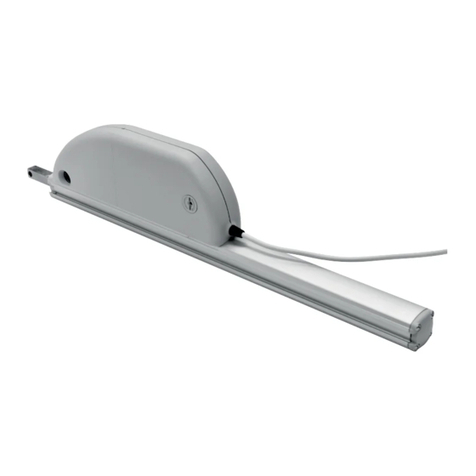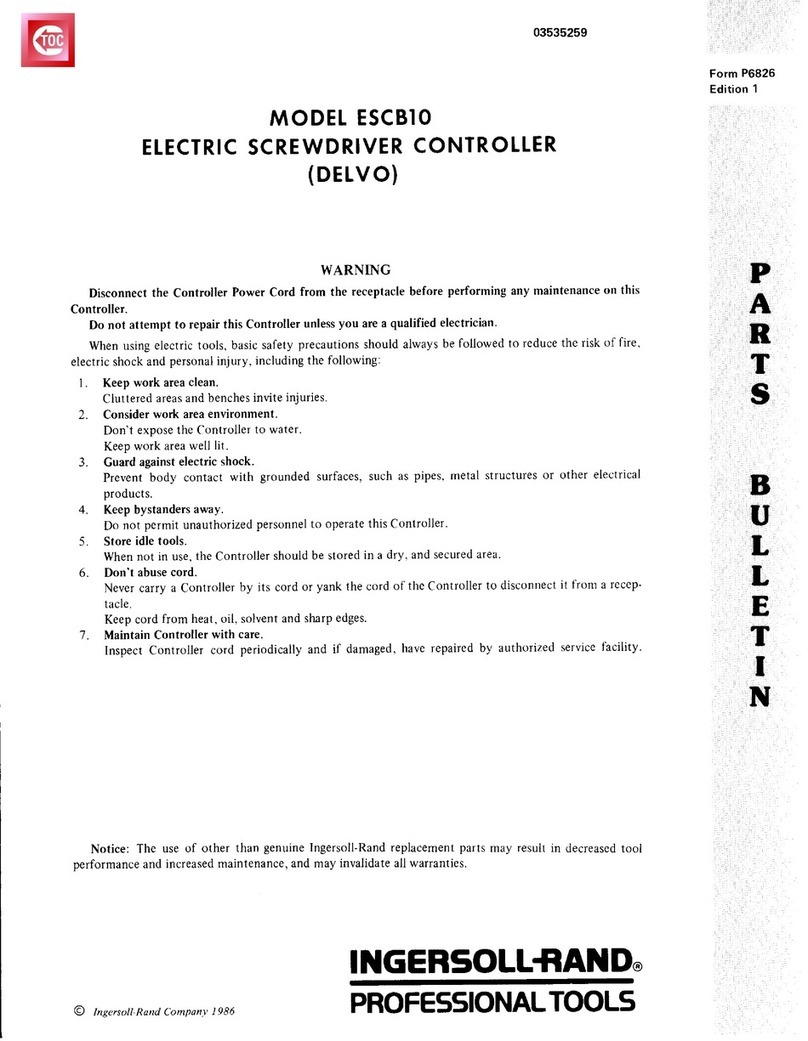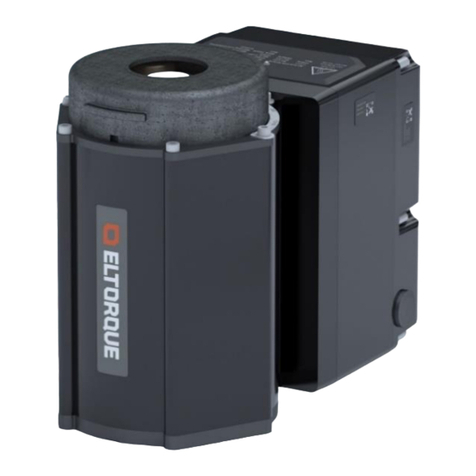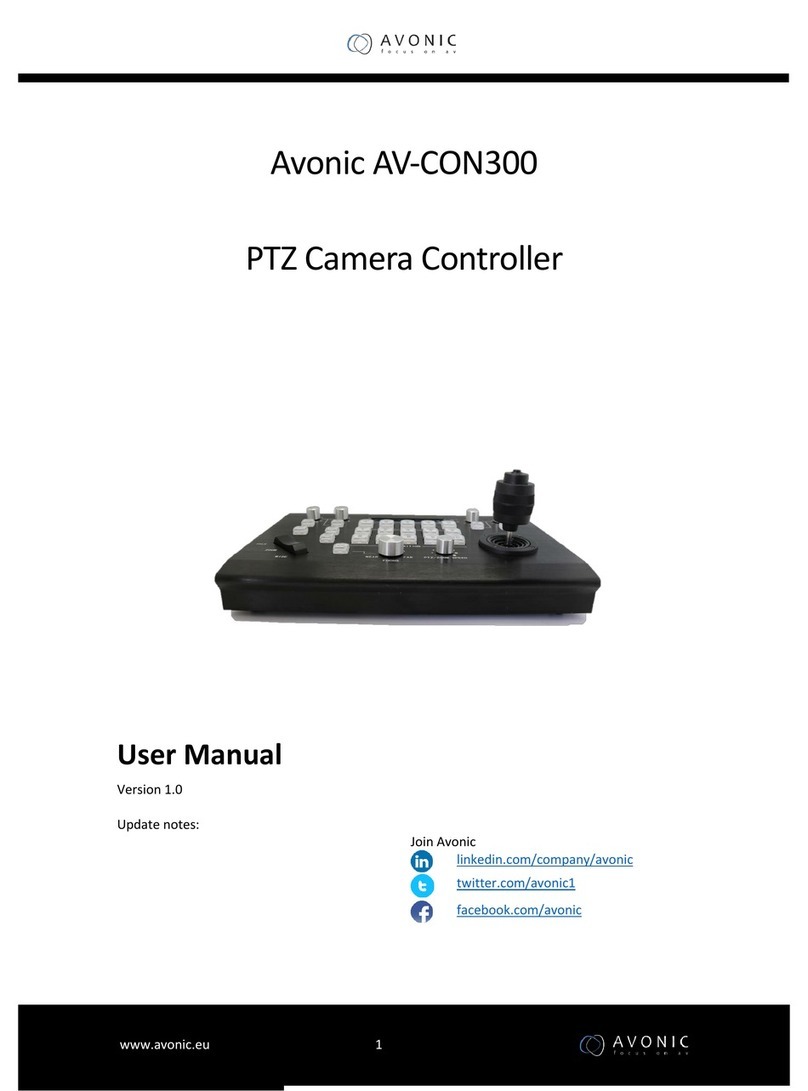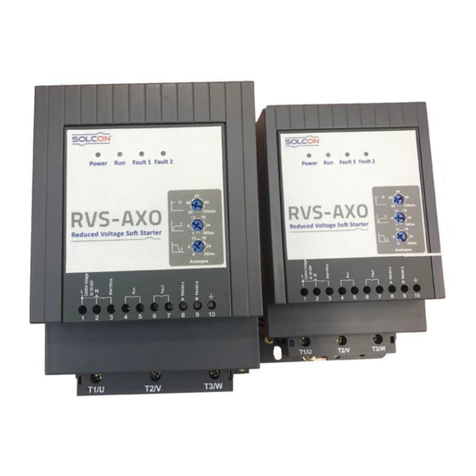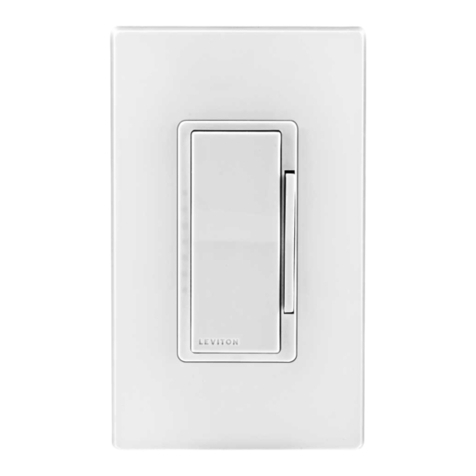GARO GDA2K-400 KNX User manual

Universal dimmer actuators GDA2K-400 KNX / GDA4K-400 KNX
Updated: Mai-17 (Subject to changes) Page 1 of 63
KNX Manual
Dimming actuators
GDA2K-400 KNX,
GDA4K-400 KNX,
Booster GBO-300
GDA2K-400 KNX
108396
GDA4K-400 KNX
108397
GBO-300
108393

Universal dimmer actuators GDA2K-400 KNX / GDA4K-400 KNX
Updated: Mai-17 (Subject to changes) Page 2 of 63
Contents
1FUNCTIONAL CHARACTERISTICS.........................................................................4
1.1 OPERATION .................................................................................................................5
2TECHNICAL DATA .......................................................................................................6
2.1 IMPORTANT INFORMATION ..........................................................................................8
3THE APPLICATION PROGRAMME "GDA4K-400 KNX" ....................................9
3.1 SELECTION IN THE PRODUCT DATABASE......................................................................9
3.2 COMMUNICATION OBJECTS........................................................................................10
3.2.1 Channel-related objects .......................................................................................10
3.2.2 Common objects...................................................................................................13
3.2.3 Description of objects...........................................................................................14
3.3 PARAMETERS ............................................................................................................20
3.3.1 Parameter pages ..................................................................................................20
3.3.2 General.................................................................................................................21
3.3.3 Channel C1/C2: Configuration options...............................................................22
3.3.4 Dimming response................................................................................................25
3.3.5 Dimming value limits ...........................................................................................29
3.3.6 Soft switching .......................................................................................................30
3.3.7 Block function.......................................................................................................31
3.3.8 Force ....................................................................................................................32
3.3.9 Scenes...................................................................................................................34
3.3.10 Feedback ..........................................................................................................37
3.3.11 Hour counter and service.................................................................................38
3.3.12 Power failure and restoration..........................................................................40
3.3.13 Diagnostic messages........................................................................................41
4APPENDIX.....................................................................................................................42
4.1 USE OF THE SOFT SWITCH FUNCTION .........................................................................42
4.1.1 General.................................................................................................................42
4.1.2 Soft ON for staircase lighting...............................................................................42
4.1.3 Driveway lighting.................................................................................................43
4.1.4 Simulation of daily routine...................................................................................44
4.1.5 Retriggering and premature switch off ................................................................45
4.1.6 Soft OFF telegram during a Soft ON process......................................................46
4.1.7 Soft ON telegram during a Soft OFF process......................................................47
4.2 USE OF THE FORCE FUNCTION....................................................................................48
4.3 DIMMING ENERGY-SAVING LAMPS (ESL)..................................................................49
4.3.1 General.................................................................................................................49
4.3.2 Selection of RC or L response:.............................................................................50
4.3.3 Dimmable energy-saving lamps with RC response (trailing edge)......................51
4.3.4 Dimmable energy-saving lamps with L response (leading edge) ........................52
4.4 DIMMING LED LAMPS...............................................................................................53
4.4.1 General.................................................................................................................53
4.4.2 Selection of RC or L response:.............................................................................53
4.5 4-BIT TELEGRAMS (BRIGHTER/DARKER) ....................................................................54
4.5.1 Telegram format 4-bit EIS 2 relative dimming:...................................................54

Universal dimmer actuators GDA2K-400 KNX / GDA4K-400 KNX
Updated: Mai-17 (Subject to changes) Page 3 of 63
4.5.2 Parameter: "Switching on/off with a 4-bit telegram" ..........................................55
4.6 THE SCENES...............................................................................................................56
4.6.1 Principle...............................................................................................................56
4.6.2 Calling up or saving scenes:................................................................................57
4.6.3 Entering scenes without telegrams.......................................................................59
4.7 STORING LIGHT SCENES IN A BUTTON........................................................................59
4.7.1 Allocation of group addresses and setting of object flags ...................................59
4.7.2 Function description ............................................................................................60
4.8 CONVERSION OF PERCENTAGES TO HEXADECIMAL AND DECIMAL VALUES................60
4.9 MAXIMUM INCANDESCENT LAMP LOAD IN PARALLEL OPERATION AND IN
COMBINATION WITH DIMMING BOOSTER GBO-300...............................................................61
4.10 FUNCTION DIAGRAM .................................................................................................63

Universal dimmer actuators GDA2K-400 KNX / GDA4K-400 KNX
Updated: Mai-17 (Subject to changes) Page 4 of 63
1 Functional characteristics
•2-/4-way universal dimmer actuator
•Dimming range 0–100%
•For dimming incandescent lamps, low voltage and high voltage halogen lamps, dimmable
LED retrofit lamps
•Also suitable for dimming dimmable energy-saving lamps via different dimming curves
•Also suitable for controlling fans
•LED switching status indicator for each channel
•Manual operation on the device (even without bus voltage)
•Dimming output: 400 W/VA per channel or 1 x 800 W/VA in parallel operation
•Use of the 1-channel GBO-300 KNX dimming booster can increase dimming output by 300
W/VA.
•Output of up to 2000 W/VA possible via max. 4 boosters in parallel operation (C1//C2)1.
•Automatic load detection (can be deactivated)
•For R, L and C-load
1Dimming outputs > 1000 W for professional use only.

Universal dimmer actuators GDA2K-400 KNX / GDA4K-400 KNX
Updated: Mai-17 (Subject to changes) Page 5 of 63
1.1 Operation
Every dimmer actuator has a manual button.
When manual mode is activated the dimmer can only be operated with the buttons.
Bus telegrams will not be executed.
4 buttons and 4 LEDs are available for each channel.
The LEDs shown the current state as a bar display:
LED 1
LED 2
LED 3
LED 4
> 0%
> 25%
> 50%
> 75%
The device dims down to 0% in the event of excess temperature or a short circuit in the load.
The buttons call up the following dimming values:
Table 1:
Button 1
Button 2
Button 3
Button 4
25%
or OFF
50% 75% 100%
In standard operation:
Pressing a button establishes the desired dimming value.
A status established via the channel button can be overwritten via the bus at any time.
In manual operation with the manual button or Manual object:
If the "manual" function is selected, the associated LED lights up.
Any time-based functions that are running (e.g. soft switching) will be terminated.
The dimming status will be frozen and can only be changed via the channel buttons.
Bus telegrams will not be executed anymore.
The "Manual" state will be reset in the event of a mains failure.
After manual operation has been cancelled, already received bus events will not be executed again.

Universal dimmer actuators GDA2K-400 KNX / GDA4K-400 KNX
Updated: Mai-17 (Subject to changes) Page 6 of 63
2 Technical data
Operating voltage KNX
Bus voltage, ≤ 4 mA
Operating voltage
230 V AC +10% -15%
Frequency
50Hz
Standby output
0.9 W / 1.5 W2
Width
4 TE / 8 TE
3
Type of installation
DIN-rail
Connection type
Screw terminals
Max. cable cross-section
Solid: 0.5 mm² (Ø 0.8) to 4 mm² | strand
with wire end sleeve: 0.5 mm² to 2.5 mm²
Number of channels
2 / 44
Lamp types
Incandescent lamps, low-voltage and high-
voltage
halogen lamps, dimmable
energy saving lamps
5
and LEDs
Switching capacity per channel
400 W
Switching capacity in parallel operation
800 W
Dimmable switching capacity
Energy saving lamps per channel
80 W
Switching capacity dimmable energy
saving lamps in parallel operation
140 W
Dimmable switching capacity 230 V LED
per channel
Trailing edge (RC mode): 400 W
Leading edge (L mode): 60 W
Dimmable switching capacity 230 V LED
in parallel operation
Trailing edge (RC mode): 800 W
Leading edge (L mode): 120 W
Switching capacity min.
5 W
Max. line length
100 m
Ambient temperature
-5 °C–+45 °C
Protection rating
IP 20
Protection class
II in accordance with EN 60 669
DIMMING BOOSTER
Standby output
0.2 W
Width
1 TE
Number of channels
1
Lamp types
Incandescent lamps, low-voltage and high-
voltage
halogen lamps and LEDs
Increase in switching capacity6for
incandescent lamps, low voltage and high
voltage halogen lamps for each booster by
300 W
2GDA4K-400 KNX
3GDA4K-400 KNX
4GDA4K-400 KNX
5Only possible without booster.
6dimming outputs > 1000 W for professional use only.

Universal dimmer actuators GDA2K-400 KNX / GDA4K-400 KNX
Updated: Mai-17 (Subject to changes) Page 7 of 63
Increase in switching capacity for dimmable
230 V LEDs per booster
45 W
Switching capacity min.
5 W

Universal dimmer actuators GDA2K-400 KNX / GDA4K-400 KNX
pdated: Mai-17 (Subject to changes) Page 8 of 63
2.1 Important information
1. The power supply (at the fuse box) must be switched off without fail when replacing lamps.
2. Connecting dimmers in series or in parallel is not permitted:
ONLY the Booster module is connected in parallel (up to 2 items per channel possible).
3. If C2 (C4) boosts the channel C1 (C3) (special parallel operation) a total of up to 4 booster
modules can be connected and an output of up to 2000 W can be dimmed.
4. Do not install adjustable transformers ahead of the dimmer.
5. Ripple control pulses from electric power plants may cause temporary flickering of the
lighting.

Universal dimmer actuators GDA2K-400 KNX / GDA4K-400 KNX
pdated: Mai-17 (Subject to changes) Page 9 of 63
3 The application programme
"GDA4K-400 KNX"
3.1 Selection in the product database
Manufacturer
GARO AB
Product family
Dimmer
Product type
GDA4K-400 KNX
Program name
GDA4K-400 KNX
Table 2
Number of communication objects
85
Number of group addresses
254
Number of associations
255

Universal dimmer actuators GDA2K-400 KNX / GDA4K-400 KNX
pdated: Mai-17 (Subject to changes) Page 10 of 63
3.2 Communication objects
The objects are divided into channel-related and common objects
3.2.1 Channel-related objects
Table 3
No. Object name Function
Length
DPT
Flags
C
R
W
T
0 Channel C1 Switching ON/OFF
1 bit
1.001
✓✓
✓
-
1 Channel C1 Brighter/darker
4 bit
3.007
✓✓
✓
-
2 Channel C1 Dimming value
1 byte
5.001
✓- ✓
-
3 Channel C1 Soft switching
1 bit
1.001
✓✓
✓
-
4 Channel C1 Block
1 bit
1.001
✓✓
✓
-
5 Channel C1 Call up/save scenes
1 byte
17.001
✓✓
✓
-
6 Channel C1 Block scenes = 1
1 bit
1.001
✓✓
✓
-
Enable scenes = 1
1 bit
1.001
✓✓
✓
-
7 Channel C1
Force = 1
1 bit
1.001
✓✓
✓
-
Force = 0
1 bit
1.001
✓✓
✓
-
Dimming value with force
1 byte
5.001
✓✓
✓
-
Force
2 bit
2.001
✓✓
✓
-
8 Channel C1 Dimming value limit
1 byte
5.001
✓✓
✓
-
9 Channel C1 Feedback On/Off
1 bit
1.001
✓✓
- ✓
10 Channel C1 Feedback in %
1 byte
5.001
✓✓
- ✓
11 Channel C1 Time to next service
2 byte
7.001
✓✓
✓
✓
Operating hours feedback
2 byte
7.001
✓✓
✓
✓
12 Channel C1 Service required
1 bit
1.001
✓✓
- ✓

Universal dimmer actuators GDA2K-400 KNX / GDA4K-400 KNX
pdated: Mai-17 (Subject to changes) Page 11 of 63
Continuation:
No. Object name Function
Length
Flags
C
R
W
T
13 Channel C1 Reset service
1 bit
1.001
✓✓
✓
-
Reset operating hours
1 bit
1.001
✓✓
✓
-
14 Channel C1 General error message
1 bit
1.001
✓✓
- ✓
15 Channel C1 Short circuit message
1 bit
1.001
✓✓
- ✓
16 Channel C1 Excess temperature message
1 bit
1.001
✓✓
- ✓
17 Channel C1 Mains power failure
1 bit
1.001
✓✓
- ✓
18 Channel C1 Load type message (R, C/L)
1 bit
1.001
✓✓
- ✓
30 Channel C2 Switching ON/OFF
1 bit
1.001
✓✓
✓
-
31 Channel C2 Brighter/darker
4 bit
3.007
✓✓
✓
-
32 Channel C2 Dimming value
1 byte
5.001
✓- ✓
-
33 Channel C2 Soft switching
1 bit
1.001
✓✓
✓
-
34 Channel C2 Block
1 bit
1.001
✓✓
✓
-
35 Channel C2 Call up/save scenes
1 byte
17.001
✓✓
✓
-
36 Channel C2 Enable scenes = 1
1 bit
1.001
✓✓
✓
-
Block scenes = 1
1 bit
1.001
✓✓
✓
-
37 Channel C2
Force = 0
1 bit
1.001
✓✓
✓
-
Force = 1
1 bit
1.001
✓✓
✓
-
Dimming value with force
1 byte
5.001
✓✓
✓
-
Force
2 bit
2.001
✓✓
✓
-
38 Channel C2 Dimming value limit
1 byte
5.001
✓✓
✓
-
39 Channel C2 Feedback On/Off
1 bit
1.001
✓✓
- ✓
40 Channel C2 Feedback in %
1 byte
5.001
✓✓
- ✓

Universal dimmer actuators GDA2K-400 KNX / GDA4K-400 KNX
pdated: Mai-17 (Subject to changes) Page 12 of 63
Continuation:
No. Object name Function
Length
Flags
C
R
W
T
41 Channel C2 Time to next service
2 byte
7.001
✓✓
✓
✓
Channel C2 Operating hours feedback
2 byte
7.001
✓✓
✓
✓
42 Channel C2 Service required
1 bit
1.001
✓✓
- ✓
43 Channel C2 Reset service
1 bit
1.001
✓✓
✓
-
Channel C2 Reset operating hours
1 bit
1.001
✓✓
✓
-
44 Channel C2 General error message
1 bit
1.001
✓✓
- ✓
45 Channel C2 Short circuit message
1 bit
1.001
✓✓
- ✓
46 Channel C2 Excess temperature message
1 bit
1.001
✓✓
- ✓
47 Channel C2 Mains power failure
1 bit
1.001
✓✓
- ✓
48 Channel C2 Load type message (R, C/L)
1 bit
1.001
✓✓
- ✓

Universal dimmer actuators GDA2K-400 KNX / GDA4K-400 KNX
pdated: Mai-17 (Subject to changes) Page 13 of 63
3.2.2 Common objects
Table 4:
No. Object name Function Type
DPT
Flags
C
R
W
T
78
C1 + C2
Manual
1 bit
1.001
✓
✓✓✓
158
C3 + C4
240 Central permanent ON Receive
1 bit
1.001
✓
✓✓✓
241 Central permanent OFF Receive
1 bit
1.001
✓
✓✓✓
242 Central switching Receive
1 bit
1.001
✓
✓✓✓
243 Call up/save central scenes Receive
1 byte
18.001
✓
✓✓✓
250 Version of bus coupling unit send
14 byte
16.001
✓
✓- ✓
251 Firmware version 1 send
14 byte
16.001
✓
✓- ✓
252 Firmware version 2 send
14 byte
16.001
✓
✓- ✓

Universal dimmer actuators GDA2K-400 KNX / GDA4K-400 KNX
pdated: Mai-17 (Subject to changes) Page 14 of 63
3.2.3 Description of objects
•Objects 0, 30, 80, 110, "Switching ON/OFF"
A 1 on this object dims up to 100%,
and 0 dims to 0%
•Objects 1, 31, 81, 111, "brighter/darker"
This object is actuated with 4-bit telegrams (DPT 3.007 Control Dimming).
This function can be used to dim the light up or down
in increments.
In the standard application, telegrams are sent with 64 increments.
IMPORTANT: The response to 4-bit telegrams depends on the
“Switching On/Off with a 4-bit telegram” parameter.
See appendix: 4-bit telegrams (brighter/darker)
•Objects 2, 32, 82, 112, "Dimming value"
This object can be used to select the desired dimmer setting directly.
Format: 1 byte percentage value EIS 2 dimming, value.
0 = 0%
255 = 100%
•Objects 3, 33, 83, 113 „Soft switching“
A “1” on this object starts a soft switching cycle, i.e.:
The brightness is gradually increased, starting from the minimum brightness.
The dimming value remains constant for the programmed time and is then gradually reduced after this
time has elapsed.
Once the programmed minimum brightness has been reached, the dimming value is reset to 0%.
The cycle can be extended or prematurely terminated via telegrams
This sequence can also be controlled using a time switch if the "Time between soft ON and soft OFF"
parameter is set to "Until soft OFF telegram".
The dimming cycle is then started with a “1” and finished with a “0”.
See appendix: Use of the soft switch function
•Object 4, 34, 84, 114 "Block"
Responses to setting and cancelling the block can be configured if the block function has been
activated (parameter page Channel C1/C2 Configuration options).
The block only applies when the object is received, i.e. with Block with OFF telegram the channel is
not blocked after restoration of the bus supply.
If the parameter Behaviour when setting the block = no reaction, a running soft-switch process will not
be interrupted.

Universal dimmer actuators GDA2K-400 KNX / GDA4K-400 KNX
pdated: Mai-17 (Subject to changes) Page 15 of 63
•Objects 5, 35, 85, 115 "Call up/save scenes"
Only available if the scene function has been activated (Configuration options parameter page).
This object can be used to save and subsequently call up scenes.
Saving stores the dimming value of the channel.
It does not matter how this dimming value is produced (whether via switch commands, central objects
or the buttons on the device).
The saved dimming value is reestablished when it is called up.
All scene numbers from 1 to 64 are supported.
Each channel can participate in up to 8 scenes.
See appendix: Scenes
•Objects 6, 36, 86, 116 "Block scenes = 1, Enable scenes = 1"
Blocks the scene function with a 1 or a 0 depending on the configuration.
As long as it is blocked, scenes cannot be saved or called up.
•Objects 7, 37, 87, 117 "Force = 1" / "Force = 0" / "Dimming value during force"
The function of the force object can be configured as a 1-bit, 2-bit or 1-byte object.
Table 5
Format of force
object
Force
Response with force
Trigger with
End with
Start
End
1 bit
1 or 0
(configurable)
0 or 1
(configurable)
configurable in the application program
2 bit
Force On = 3
Force Off = 2
Deactivate force
= 0 or 1
configurable in the
application program.
The last dimming
value before force is
restored
1 byte
1-100%
0
The triggering
telegram also acts
simultaneously as a
force dimming value
The last dimming
value before force is
restored
•Objects 8, 38, 88, 118 "Dimming value limit"
The value received will be configured as the maximum configurable dimming value.
Its range of applicability is defined on the Dimming value restrictions parameter page.
•Object 9, 39, 89, 119 "Feedback On/Off"
Sends the current dimming status:
1 = current dimming value is between 1% and 100%
0 = current dimming value is 0%

Universal dimmer actuators GDA2K-400 KNX / GDA4K-400 KNX
pdated: Mai-17 (Subject to changes) Page 16 of 63
•Object 10, 40, 90, 120 "Feedback in %"
Sends the new dimming value after a change as soon as a dimming process is completed, i.e. once the
new set point value has been reached.
Format: 1 byte, 0 ... 255 i.e. 0 ... 100%
•Objects 11, 41, 91, 121 "Operating hours feedback", "Time to next service"
Only available if the operating hours counter function has been activated
(Configuration options parameter page).
Reports, depending on selected Type of operating hours counter (Operating hours counter and service
parameter page), either the remaining period to the next set service or the current status of the
operating hours counter.
•Objects 12, 42, 92, 122 "Service required"
Only available if the hour counter function has been activated
(Configuration options parameter page) and Type of hour counter = Counter for time to next service.
Reports if the next service is due.
0 = not due
1 = service is due.
•Objects 13, 43, 93, 123 "Reset operating hours", "Reset service"
Only available if the operating hours counter function has been activated
(Configuration options parameter page).
•Object 14, 44, 94, 124 "General error message"
Used as a malfunction signal:
0 = no error
1 = an error has been detected
This message can, for example, be displayed on a screen
•Object 15, 45, 95, 125 "Short circuit message"
0 = OK
1 = Short circuit at dimmer output:
Check connected lines and load.
When there is a short circuit, all 4 status LEDs on the device flash.

Universal dimmer actuators GDA2K-400 KNX / GDA4K-400 KNX
pdated: Mai-17 (Subject to changes) Page 17 of 63
•Object 16, 46, 96, 126 "Excess temperature message"
0 = OK
1 = the dimmer is overloaded:
•connected power is too high,
•ambient temperature is too high,
•booster defective
•incorrect installation position, i.e. device cannot dissipate the heat
If there is excess temperature, the status LEDs 2, 3, and 4 flash.
•Object 17, 47, 97, 127 "Mains power failure"
0 = OK
1 = No mains voltage available:
Mains failure or defective hardware.
To be able to recognise the mains failure on the load side, the dimmer must be supplied with power
via the mains connection.
•Object 18, 48, 98, 128 "Load type message (R/C, L)"
Currently selected load type feedback.
0 = leading edge (L load connected), conventional transformers
1 = trailing edge (R-, C-load connected), electronic transformers or incandescent lamp load
•Objects 78, 158 "Manual"
Only available for devices of the series (order number 493…)
Puts the corresponding channels in manual mode or sends the status of manual operation.
Table 6
Telegram
Meaning
Explanation
0
Auto
All channels can be operated via the bus as well as via the buttons.
1 Manual
The channels can only be operated via the buttons on the device. Bus
telegrams will not work.
Any time-based functions that are running (e.g. soft switching) will be
terminated.
The duration of the manual mode, i.e. the function of the manual operation is set on the General
parameter page.
After manual operation has been cancelled, already received bus events will not be executed again.
The "Manual" state will be reset in the event of a mains failure.

Universal dimmer actuators GDA2K-400 KNX / GDA4K-400 KNX
pdated: Mai-17 (Subject to changes) Page 18 of 63
•Object 240 "Central permanent ON"
Central switch-on function.
Enables simultaneous switching on of all channels with one single telegram.
0 = No function
1 = Permanent ON
Participation in this object can be set individually for each channel
(see parameter page Channel C1/C2: Configuration options).
IMPORTANT:
This object takes top priority.
As long as it is set, the other switch commands will not work on the participating channels.
•Object 241 "Central permanent OFF"
Central switch-off function.
Enables simultaneous switching off of all channels with one single telegram.
0 = No function
1 = Permanent OFF
Participation in this object can be set individually for each channel.
IMPORTANT: This object has the second highest priority after Central permanent ON. As long as it
is set, the other switch commands will not work on the participating channels.
•Object 242 "Central switching"
Central switch function.
Enables simultaneous switching on or off of all channels with one single telegram.
0 = OFF
1 = ON
Participation in this object can be set individually for each channel
(see parameter page Channel C1/C2: Configuration options).
With this object, every participating channel responds exactly as if its 1st object (i.e. obj. 0, 30, etc.)
were receiving a switching command.
•Object 243 "Call up/save central scenes"
This object can be used to save and subsequently call up "scenes".
The save process stores the current status of the dimming channel (or the switch state with other
actuators), regardless of how the status was brought about (e.g. via dimming values, switching
commands, central objects or the manual switches).
The saved status is thus restored when called up.
Each channel can participate in a maximum of 8 scenes.
See appendix: The scenes

Universal dimmer actuators GDA2K-400 KNX / GDA4K-400 KNX
pdated: Mai-17 (Subject to changes) Page 19 of 63
•Objects 244-249
Not used.
•Object 250 "Version of bus coupling unit"
For diagnostic purposes only.
Sends the bus coupling unit software version after reset or download.
Can also be read out via the ETS.
Format: Axx Hyy Vzzz
Code
Meaning
xx
00 .. FF = Version of application without dividing point (12 = V1.2, 13 = V1.3 etc.).
yy
Hardware version 00..99
zzz
Firmware version 000..999
EXAMPLE: A12 H00 V014
- ETS application version 1.2
- Hardware version $00
- Firmware version $14
•Object 251, 252 "Firmware version 1.2"
For diagnostic purposes only.
Sends the firmware versions of the device after reset or download.
Can also be read out via the ETS.
The version is issued as an ASCII character string.
Format: Mxx Hyy Vzzz
Code
Meaning
xx
01 .. FF = Module code (hexadecimal).
yy
Hardware version 00..99
zzz
Firmware version 000..999
EXAMPLE: M13 H00 V025
- Module $13 = GDA2K-400 KNX / GDA4K-400 KNX
- Hardware version V00
- Firmware version V25

Universal dimmer actuators GDA2K-400 KNX / GDA4K-400 KNX
pdated: Mai-17 (Subject to changes) Page 20 of 63
3.3 Parameters
3.3.1 Parameter pages
Table 7
Function
Description
General
Central parameters.
Channel C1
Configuration options
Characteristics of channel and activation of additional functions
(soft switching, force, scenes, etc.).
Dimming response
Load selection, dimming times, dimming switch-on value, etc.
Dimming value limits
Scope of the limit.
Soft switching
Brightness/dimming value and time settings for soft switching.
Block function
Type of block telegram and response to blocking.
Force
Response in forced operation.
Scenarios
Selection of scene numbers relevant to the channel.
Feedback
Format of the feedback objects and cyclical transmission time.
Hour counter and service
Type of hour counter and, if required, service interval etc..
Power failure and restoration
Behaviour during mains or bus failure and restoration.
Diagnostic messages
Activate transmission of the diagnostic and error messages.
This manual suits for next models
2
Table of contents
Popular Controllers manuals by other brands

Siemens
Siemens SITRANS VP300 operating instructions
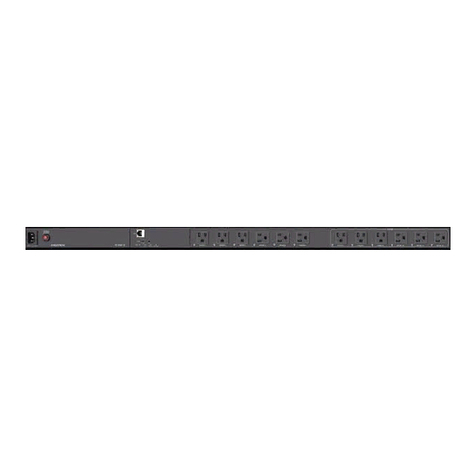
Crestron
Crestron PC-350V-12 quick start

Lawn Genie
Lawn Genie L80306P Installation and operation guide
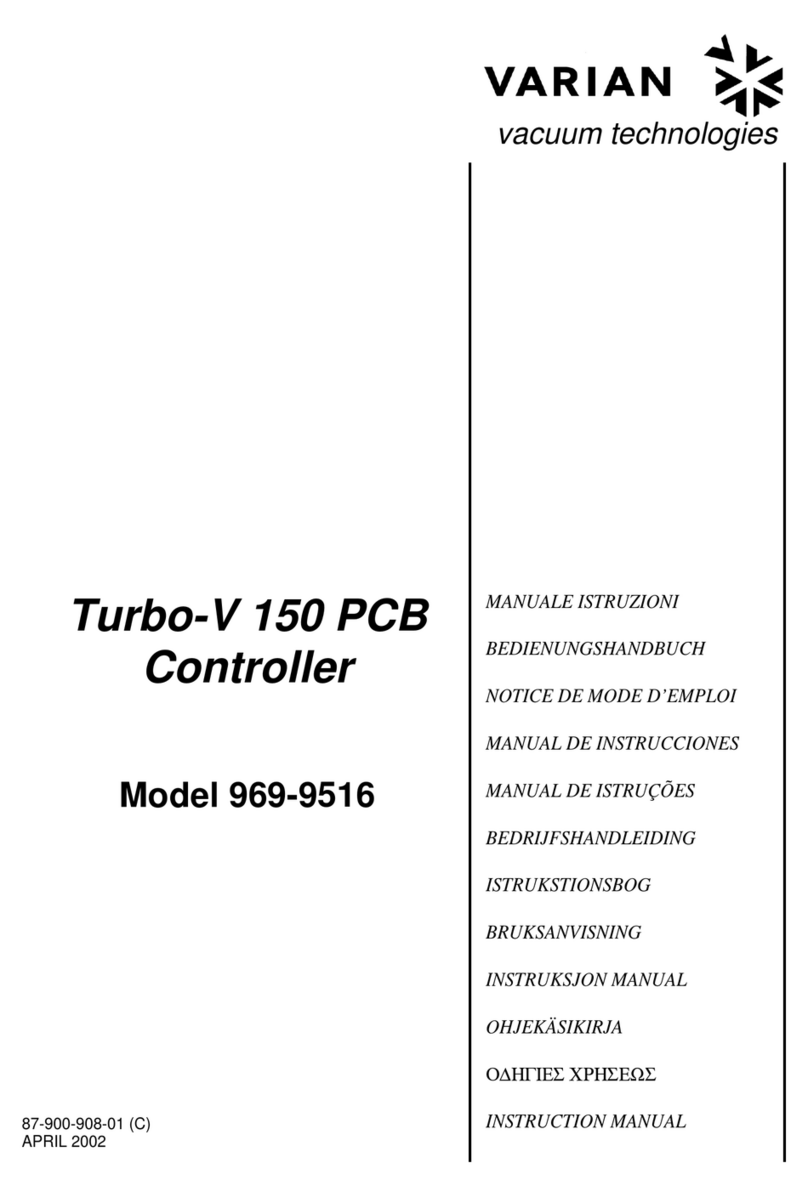
Varian
Varian Turbo-V 150 PCB instruction manual
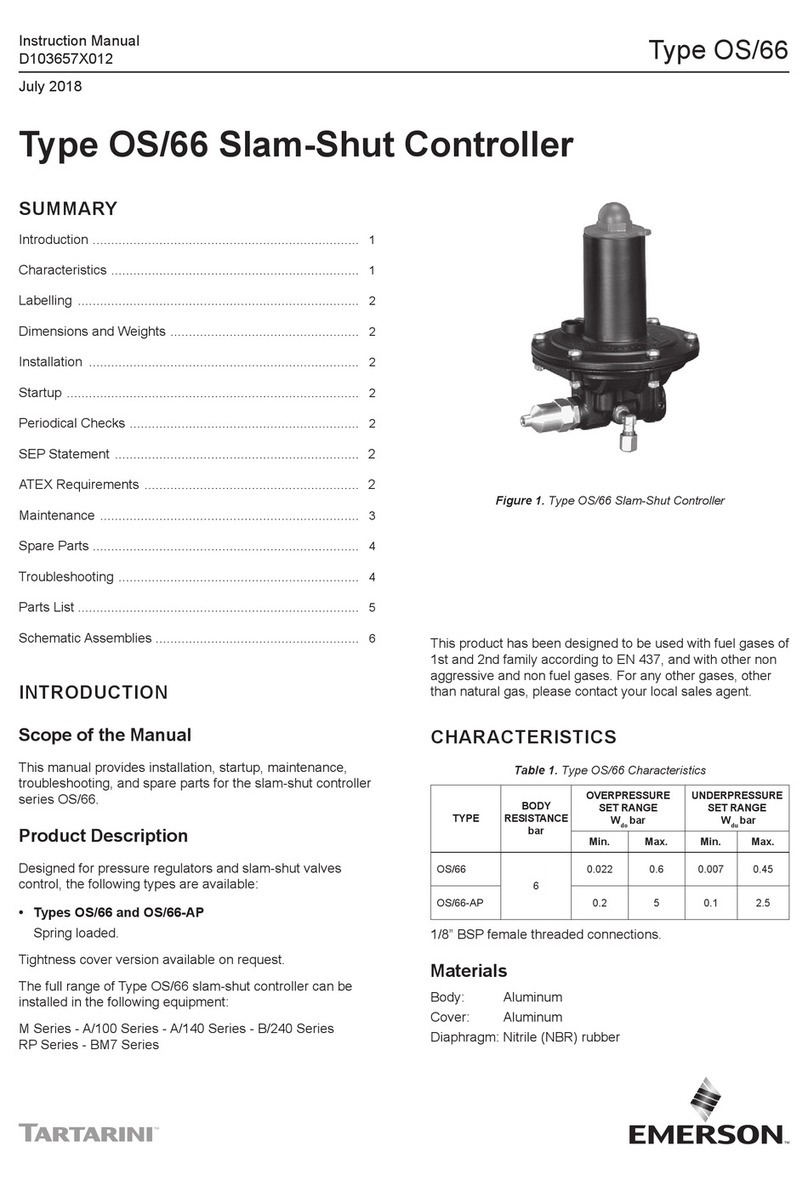
Emerson
Emerson Tartarini OS/66 instruction manual
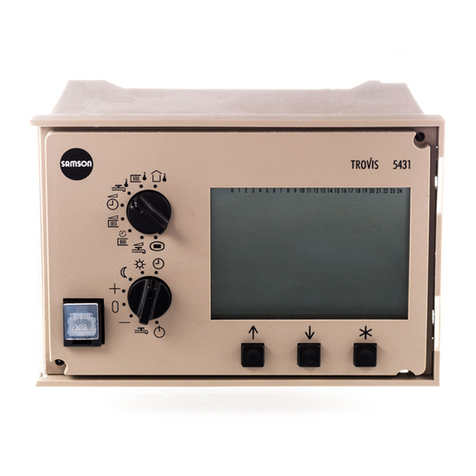
Samson
Samson TROVIS 5431 Mounting and operating instructions
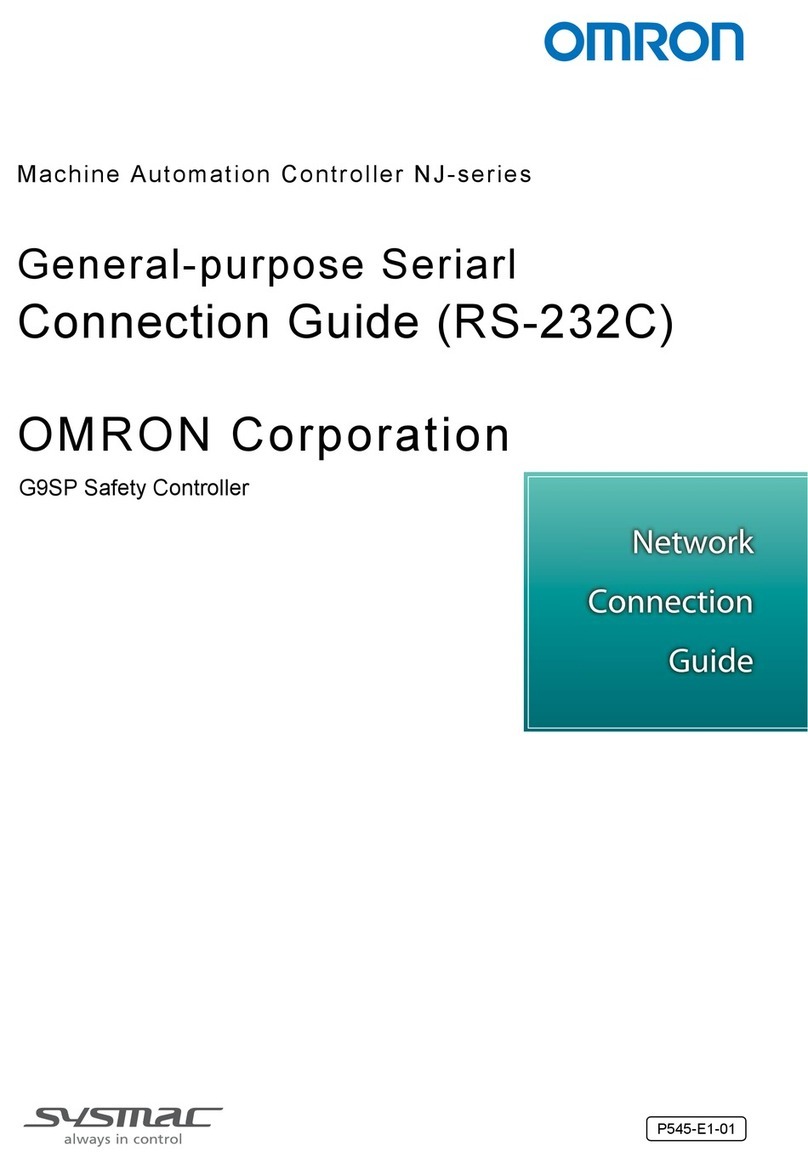
Omron
Omron G9SP-N20S Network Connection Guide
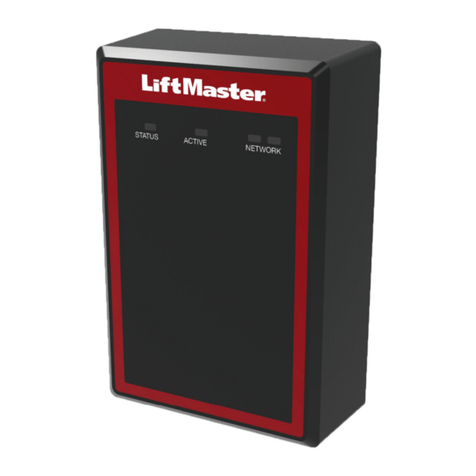
Chamberlain
Chamberlain CAP2D quick start guide

ICP DAS USA
ICP DAS USA ISaGRAF I-8437-80 Getting started
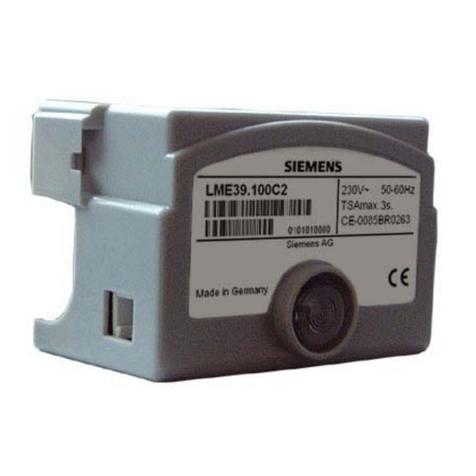
Siemens
Siemens LME39 Series quick start guide

HP
HP StorageWorks Modular Smart Array 500 System overview
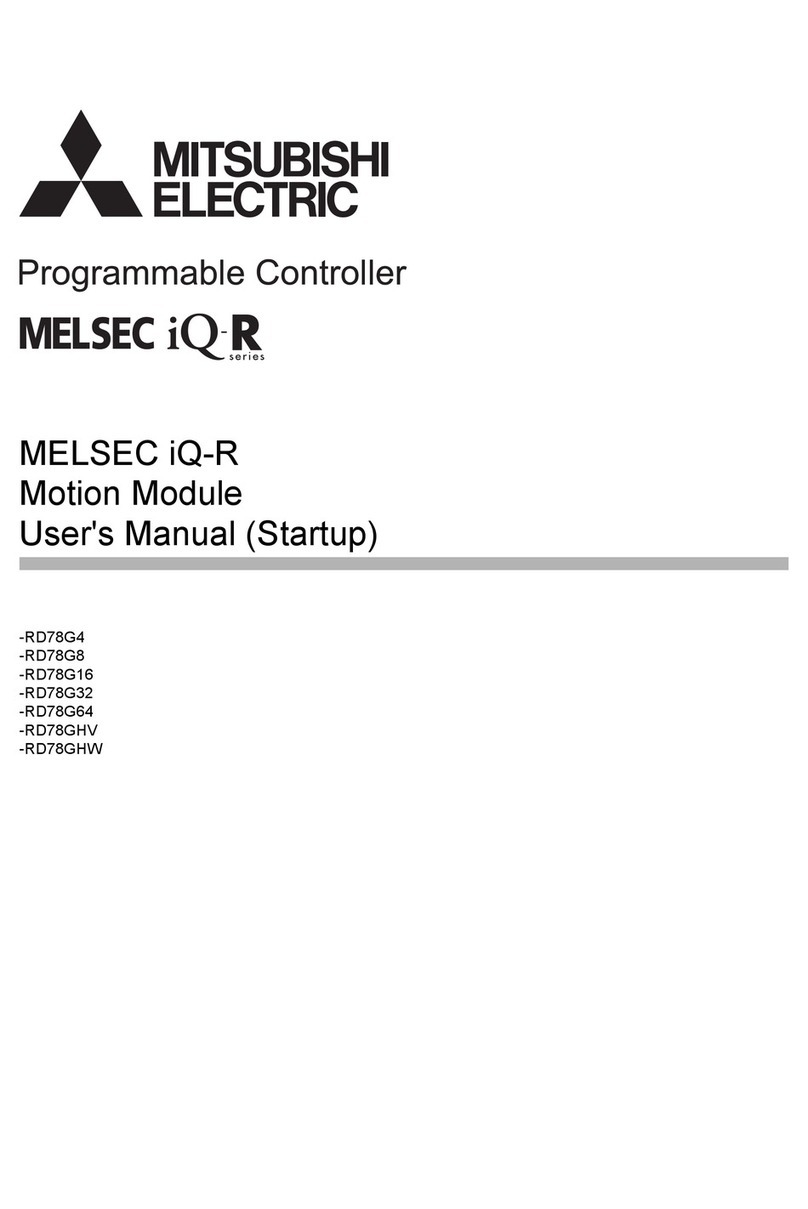
Mitsubishi Electric
Mitsubishi Electric MELSEC iQ-R RD78G4 user manual
